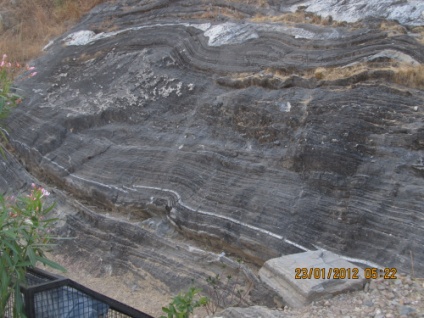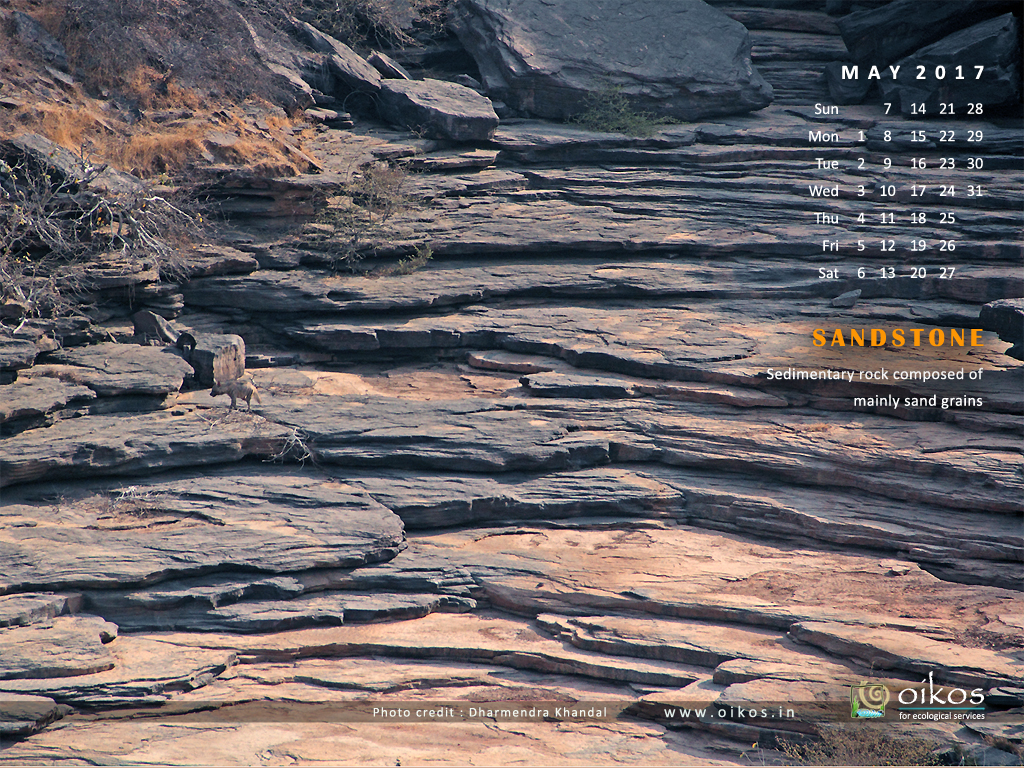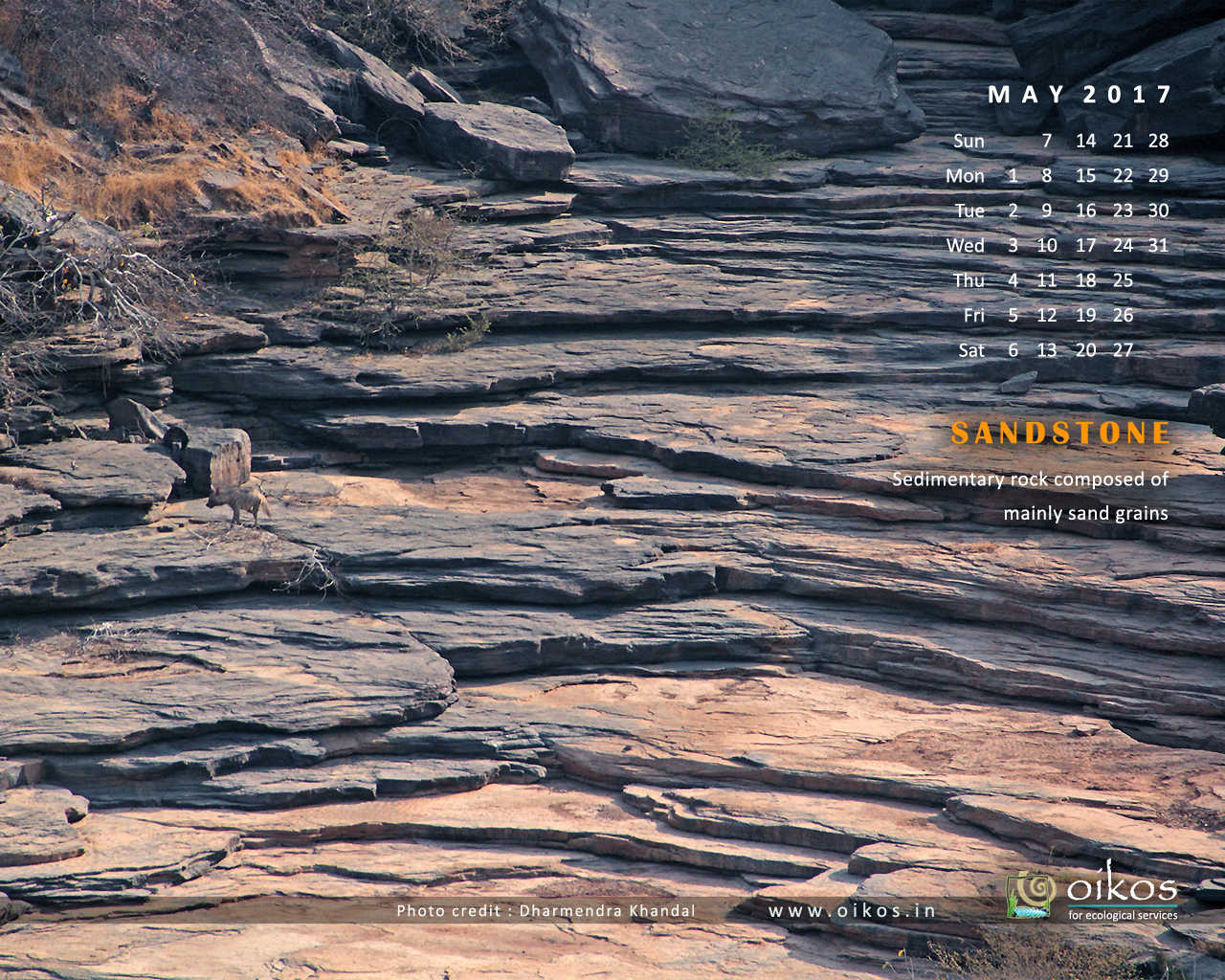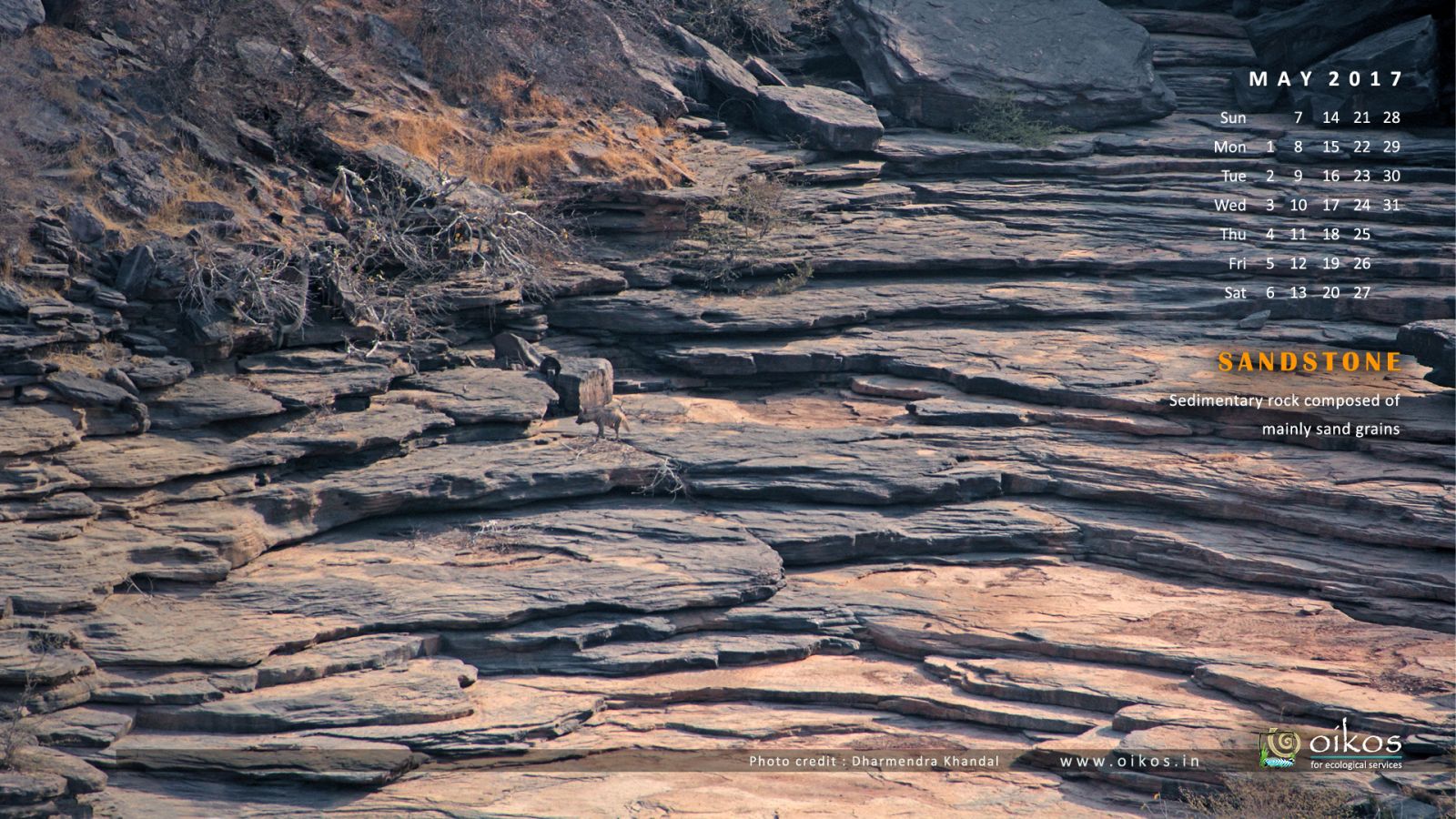May - 2017
Dear nature lovers,
Greetings from oikos !
Sandstone is a sedimentary rock composed of sand-sized particles (0.1 to 2 mm).
It is secondary and transported in suspension, arenaceous, clastic texture. (A clast is a fragment of geological detritus. Clastic rocks are composed of fragments, or clasts, of pre-existing minerals and rock.)


During formation of sandstone, layers of sand accumulates as the result of sedimentation, either from water (as in a stream, lake, or sea) or from air (as in a desert). Sandstone is formed when accumulated sediments are compacted by the pressure of overlying deposits and cemented by the precipitation of minerals within the pore spaces between sand grains.
It may show various structure like ripple marks (as seen in the picture0, or graded bedding or dendritic mass (tree or moss like) or bleached marking etc.
Sandstone is made up of grains of quartz and other minerals of fairly uniform size. These grains are held together by a cementing material which may be siliceous or ferruginous. The toughness of sandstone depends mostly on the nature of this cementing material. They are named based on the type of cementing material. E.g. If it is rich in Calcium, called as Calcareous sandstone, if rich in Iron, called Ferruginous sandstone.
Sandstone reserves in India are found over the states of Andhra Pradesh, Assam, Bihar, Gujarat, Haryana, Madhya Pradesh, Meghalaya, Mizoram, Karnataka, Orissa, Punjab, Rajasthan, Uttar Pradesh, Tamil Nadu and West Bengal. But over 90% of the deposits of sandstone are in Rajasthan, spread over the many districts. India is among the leading countries when it comes to mining and export of sandstone. It is available in different colors.
Famous Badami caves from Karnataka are carved in ferruginous sandstone, Laal kila in Delhi and many monuments from Jaipur, Jaisalmer, Jodhpur and many parts of India are built in sandstone.
Rock formations that are primarily composed of sandstone usually allow the percolation of water and other fluids and are porous enough to store large quantities, making them valuable aquifers and petroleum reservoirs.
Uses: Sandstone has been used for domestic construction and house wares since prehistoric times, and continues to be used.
Regards,
Ketaki & Manasi
* Thanks to Geologist Dr. Ajit Vartak for all help in providing information.
Additional information source: Wikipedia.
Click on any of the desired options below to get appropriate image.
Save it to computer and set it as desktop background for your computer monitor.
Oikos for ecological services
Ph. 020-25451875
Web: www.oikos.in





